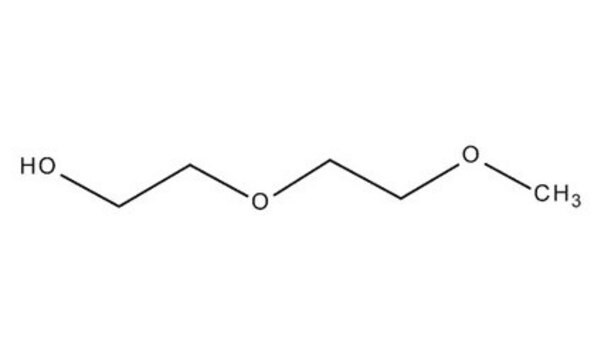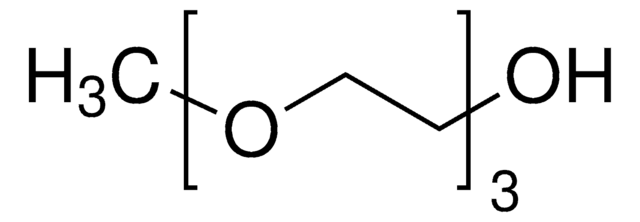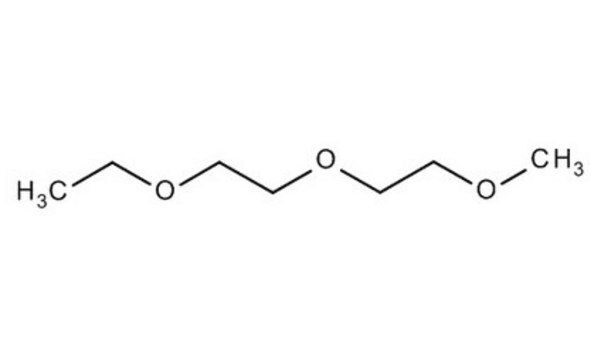579548
Diethylene glycol methyl ether
ReagentPlus®, ≥99.0%
Sinónimos:
2-(2-Methoxyethoxy)ethanol, Methyldiglycol
About This Item
Productos recomendados
densidad de vapor
4.14 (vs air)
Nivel de calidad
presión de vapor
0.2 mmHg ( 20 °C)
Línea del producto
ReagentPlus®
Ensayo
≥99.0%
Formulario
liquid
temp. de autoignición
221 °C
lim. expl.
1.38-22.7 %
impurezas
≤0.1% (water)
índice de refracción
n20/D 1.426 (lit.)
bp
194 °C (lit.)
mp
−70 °C (lit.)
densidad
1.023 g/mL at 25 °C (lit.)
cadena SMILES
COCCOCCO
InChI
1S/C5H12O3/c1-7-4-5-8-3-2-6/h6H,2-5H2,1H3
Clave InChI
SBASXUCJHJRPEV-UHFFFAOYSA-N
¿Está buscando productos similares? Visita Guía de comparación de productos
Descripción general
Aplicación
- Composition-explicit distillation curves of diesel fuel with glycol ether and glycol ester oxygenates: fuel analysis metrology to enable decreased particulate emissions.: Investigates the incorporation of diethylene glycol methyl ether into diesel fuels to reduce particulate emissions. This research is vital for environmental science, focusing on improving air quality and reducing the ecological impact of diesel engines (Smith BL et al., 2008).
Información legal
¿No encuentra el producto adecuado?
Pruebe nuestro Herramienta de selección de productos.
Palabra de señalización
Danger
Frases de peligro
Consejos de prudencia
Clasificaciones de peligro
Repr. 1B
Código de clase de almacenamiento
6.1C - Combustible acute toxic Cat.3 / toxic compounds or compounds which causing chronic effects
Clase de riesgo para el agua (WGK)
WGK 1
Punto de inflamabilidad (°F)
188.6 °F - closed cup
Punto de inflamabilidad (°C)
87 °C - closed cup
Elija entre una de las versiones más recientes:
¿Ya tiene este producto?
Encuentre la documentación para los productos que ha comprado recientemente en la Biblioteca de documentos.
Los clientes también vieron
Nuestro equipo de científicos tiene experiencia en todas las áreas de investigación: Ciencias de la vida, Ciencia de los materiales, Síntesis química, Cromatografía, Analítica y muchas otras.
Póngase en contacto con el Servicio técnico








